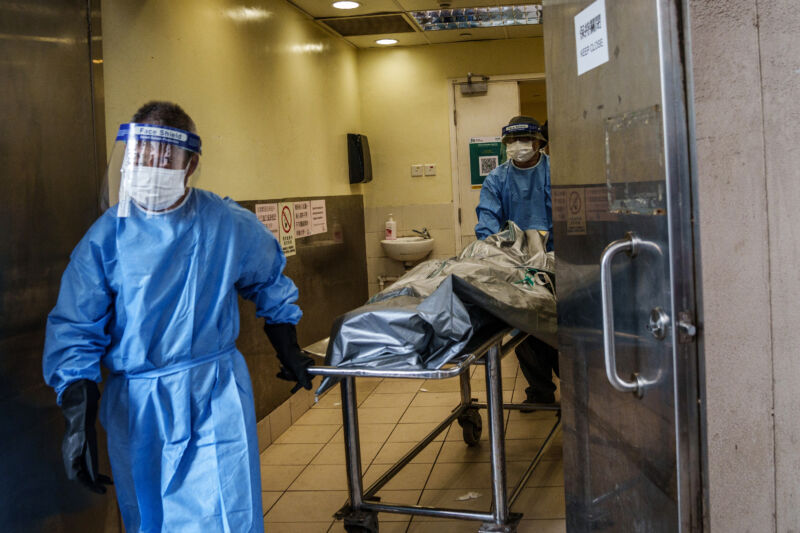
During much of the pandemic, China kept the coronavirus at bay. The country has adopted an aggressive COVID-Zero plan, rigorously identifying, containing and tracing cases to prevent the viral spread. It turned out to work remarkably well – until the advent of the ultratransmissible omicron variant.
The seemingly uncontrollable virus is now exploding in China, breaking daily records and exposing a tragic flaw in China’s COVID policy: The country’s most vulnerable — the elderly — are among the least protected by vaccination. As such, death rates are bound to rise.
This has already happened in Hong Kong, which saw its own towering ommicron wave between January and March. In its wake was one of the highest death rates the world has seen during the pandemic. In a study published Friday by the Centers for Disease Control and Prevention, the US CDC teamed up with CDC China for a postmortem investigation into the fatal spike. The analysis revealed the fatal flaw in failing to vaccinate older people.
By the end of December 2021, about 67 percent of eligible Hong Kong residents had been vaccinated with at least one dose. About 64 percent had two doses and only 5 percent had boosters. But the numbers went downhill with age. Of people 60 and older, only 52 percent had one dose or more. Of the 70- to 79-year-olds, only 48 percent had at least one. And for people 80 and older, only 20 percent had at least one dose.
On January 6, officials in Hong Kong discovered the city’s first cluster of ommicron cases, triggering an outbreak that peaked on March 4. As of March 21, officials had recorded a total of 1,049,959 cases and 5,906 COVID-19-related deaths. The death rate was 38 per million people, one of the highest in the world.
deadly mistake
Of the 5,906 COVID-19 deaths during the ommicron wave, 96 percent were among people 60 and older. Overall, if we compared the death rate to people under 30, people aged 60 and older were 253 times more likely to die, and people aged 80 and older were 946 times more likely to die. Of those 60 and older who died, 70 percent (3,970 out of 5,655) had not been vaccinated, and another 18 percent (1,023 out of 5,655) had received only one vaccine dose. Overall, unvaccinated people 60 and older were 21 times more likely to die than people in the age group who received at least two doses.
It is unclear why relatively few older adults in Hong Kong and elsewhere in China were vaccinated. The CDC authors of the analysis noted that a June 2021 survey in Hong Kong found that 57 percent of people were hesitant or resistant to COVID-19 vaccines. “The dynamic COVID-Zero strategy, successful until the emergence of the omicron variant, would have led to further complacency, especially among the elderly,” the authors speculated.
They noted that since the start of the omicron wave, vaccination among older adults has increased “significantly.” As of March 21, vaccination among 60- to 69-year-olds rose from 65 percent to 81 percent; between the ages of 70 and 79, vaccination increased from 48 percent to 69 percent; and among the over-80s, vaccination increased from 20 percent to 39 percent. Still, those numbers are low compared to those in the US and Europe. And in mainland China, only about half of people over 80 have been fully vaccinated, according to March data.
As ommicron rises in Shanghai, the analysis offers a clear call to action. “This report underscores that vaccination reduces death rates from COVID-19 in older adult populations and draws attention to the importance of monitoring age-specific vaccination coverage, identifying differences in age-specific vaccination coverage, and addressing those coverage gaps,” the US CDC wrote. in a statement.

